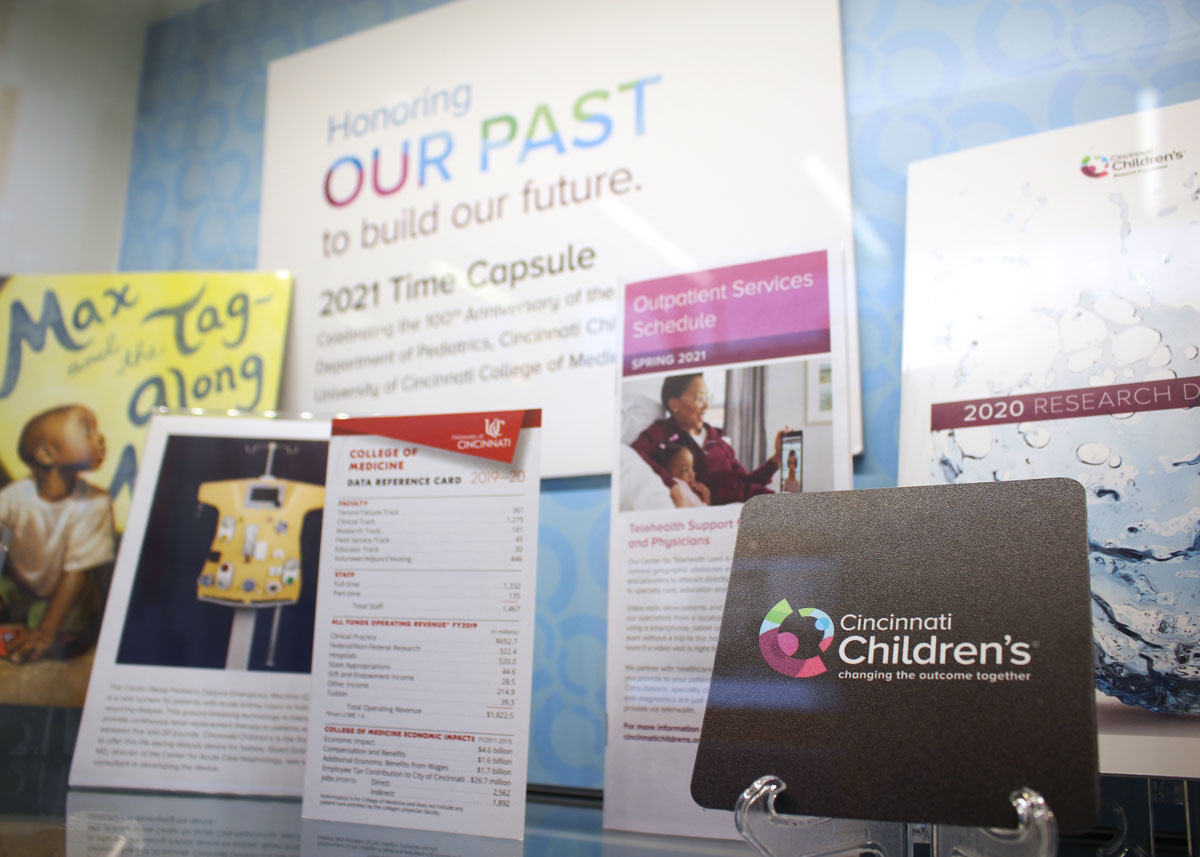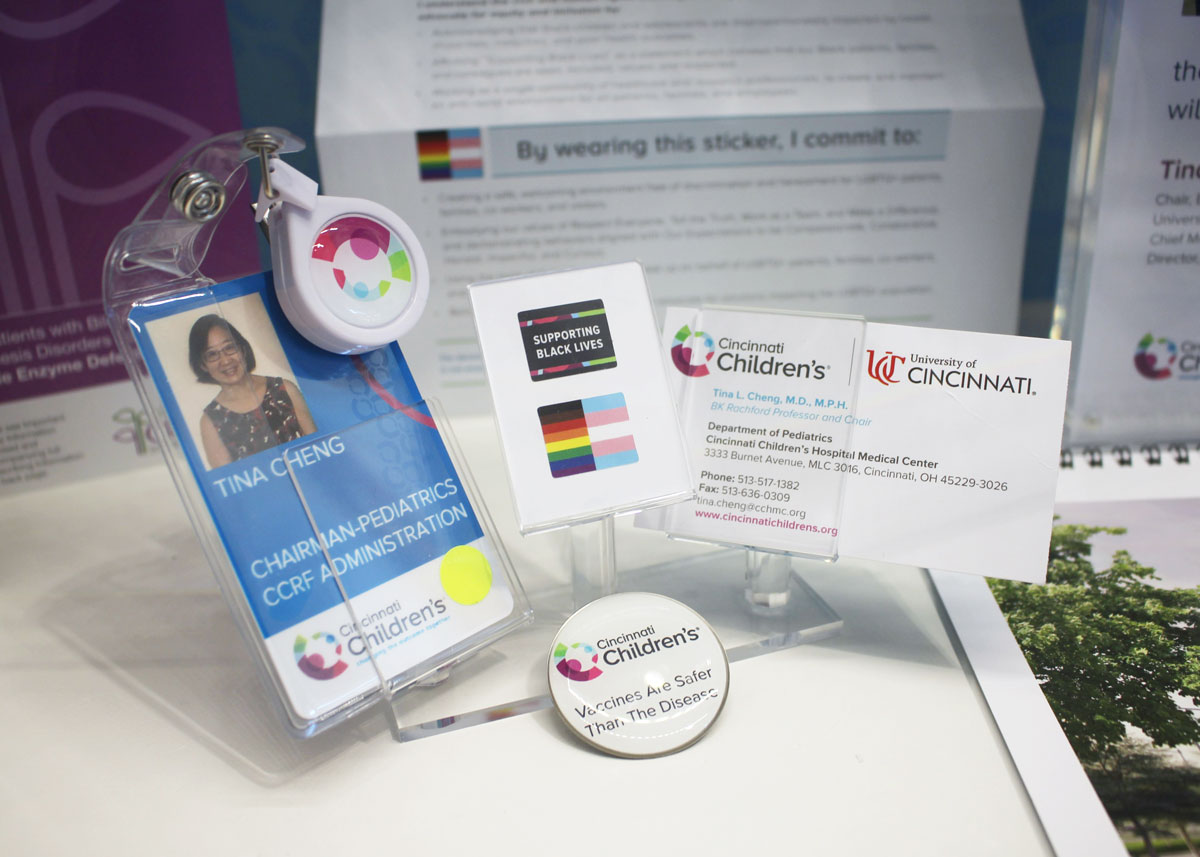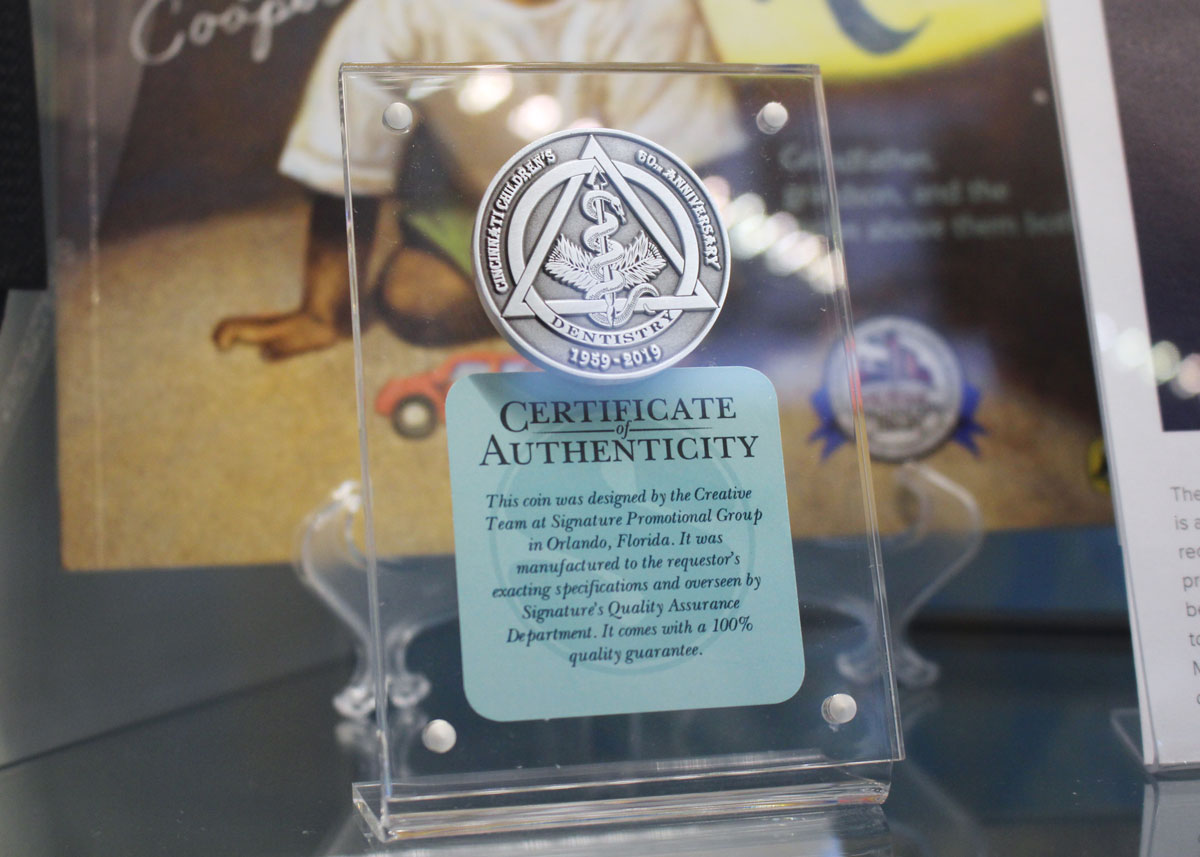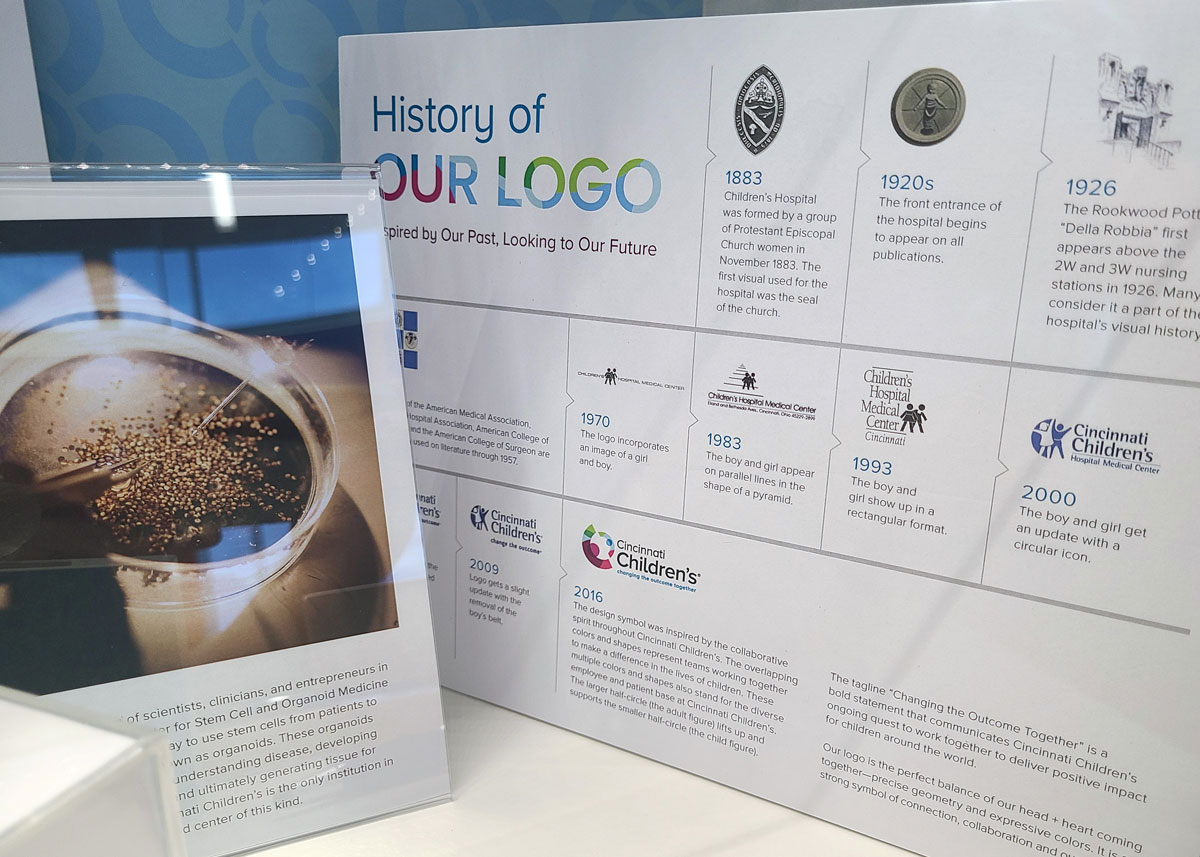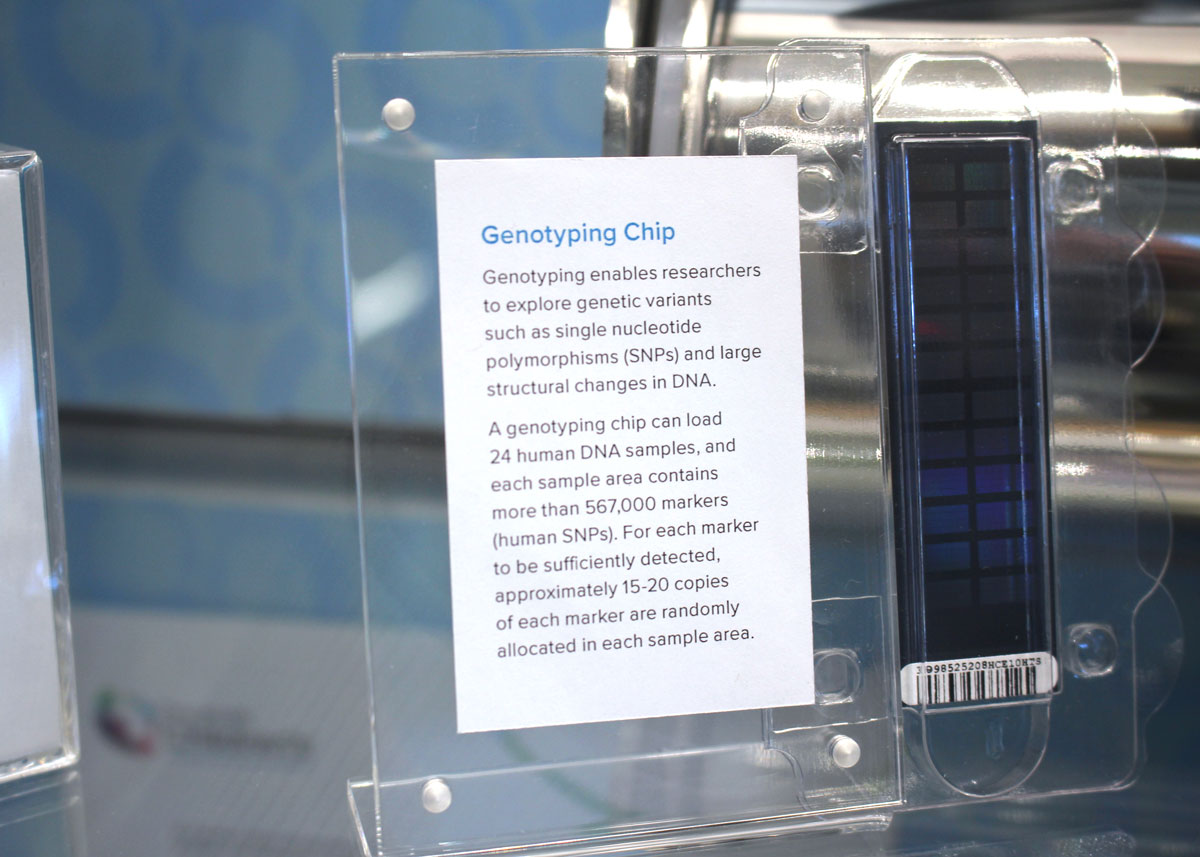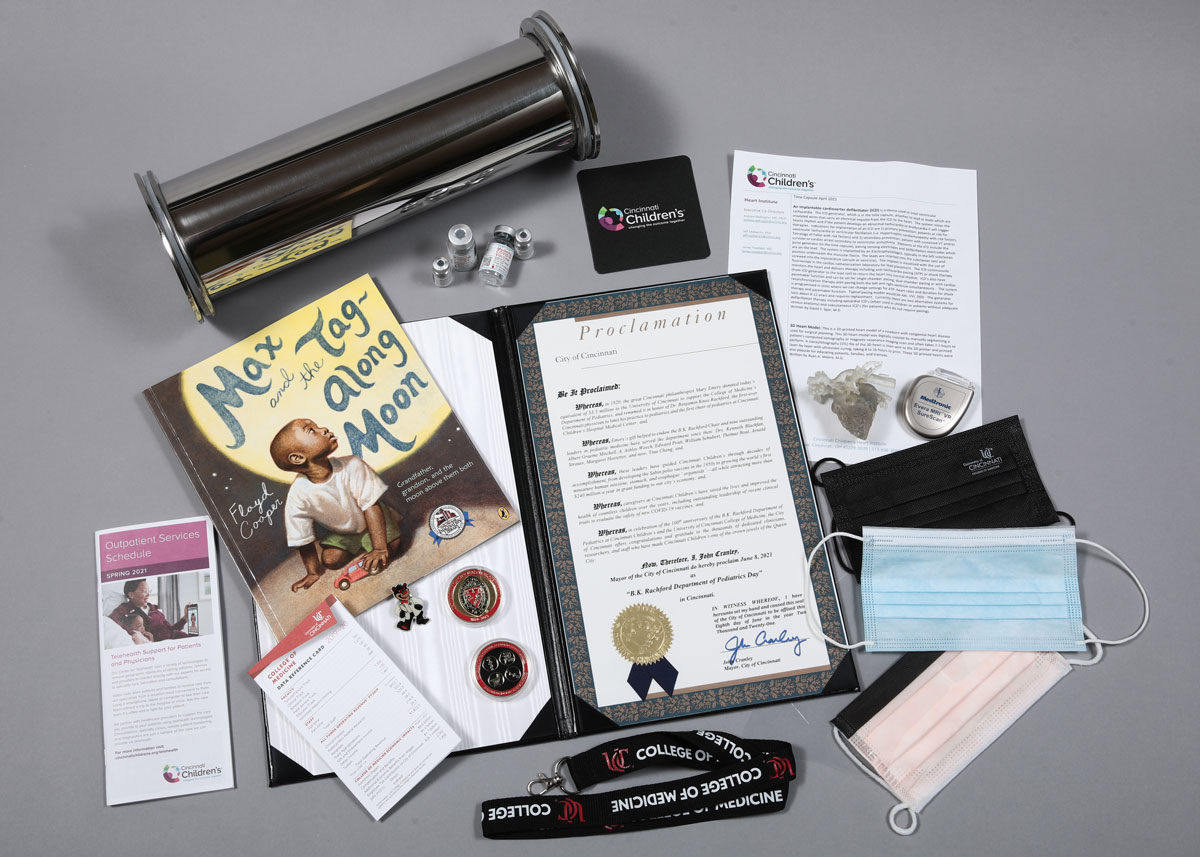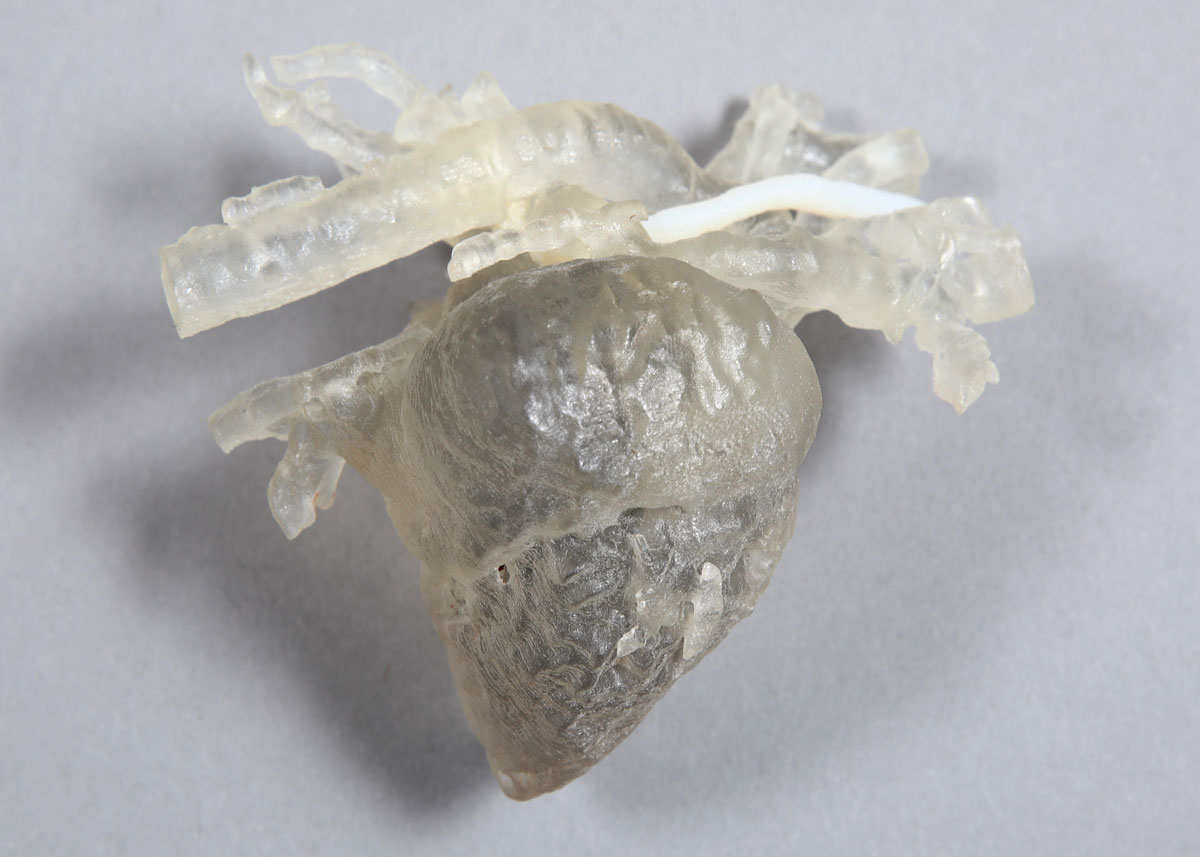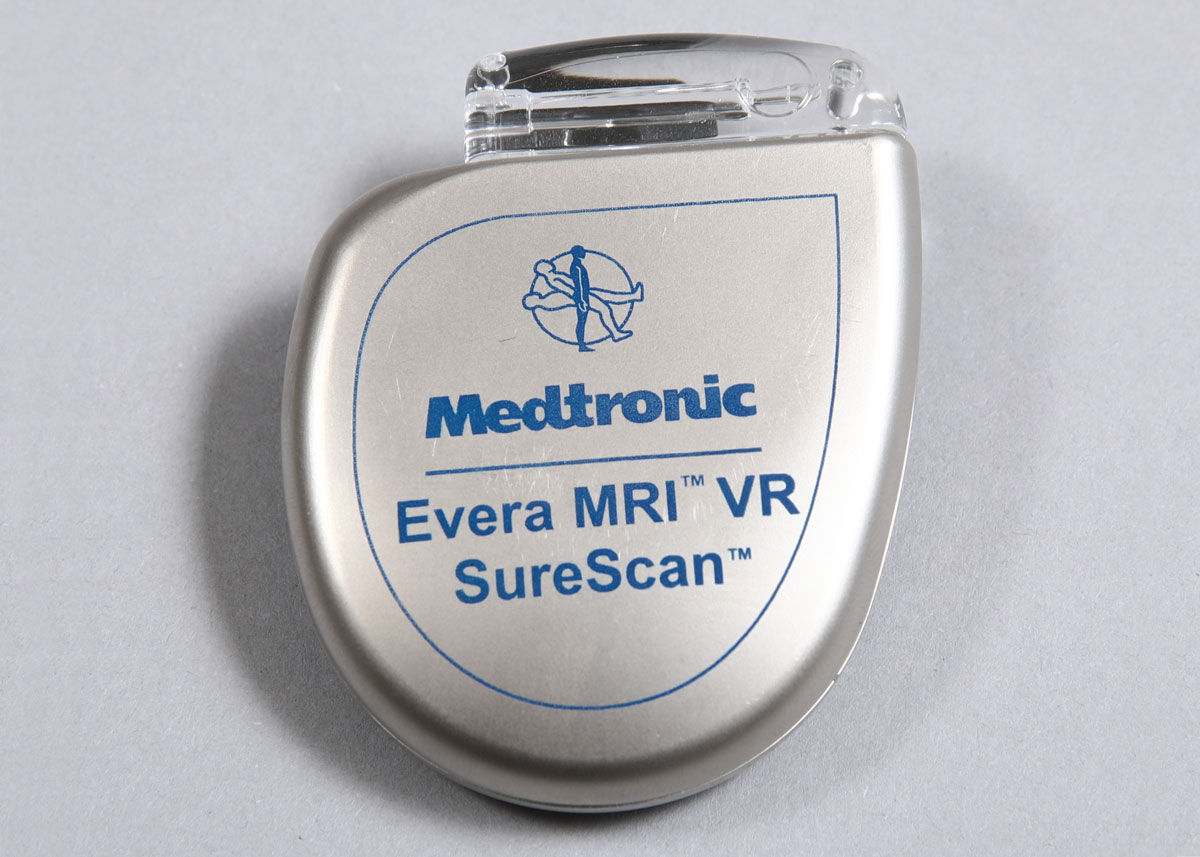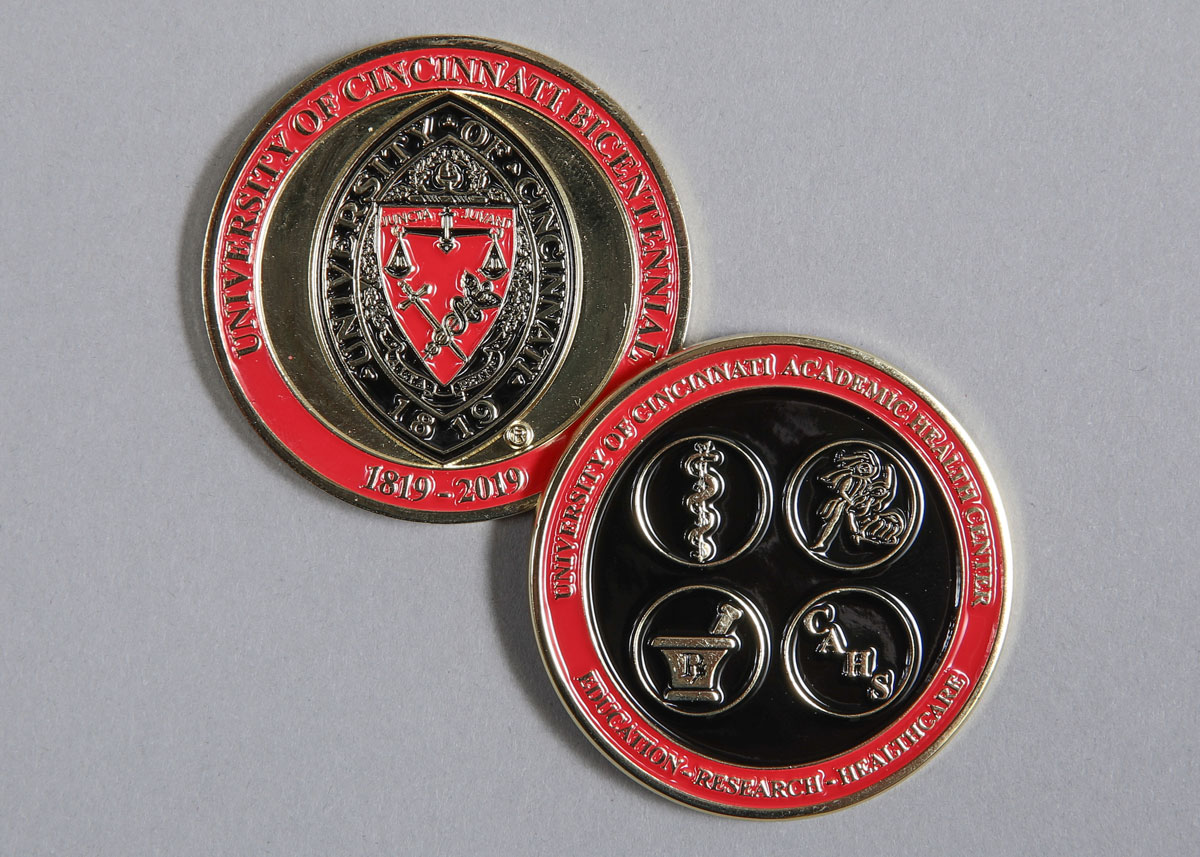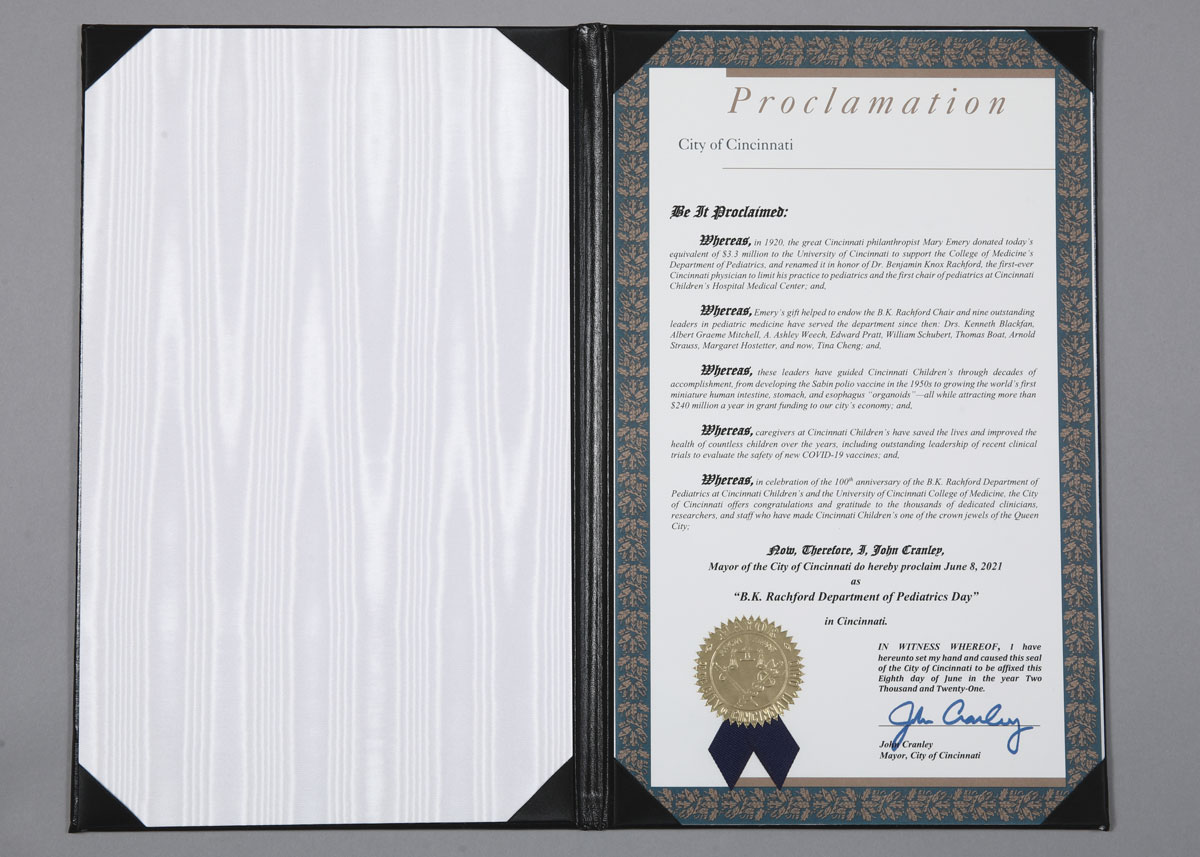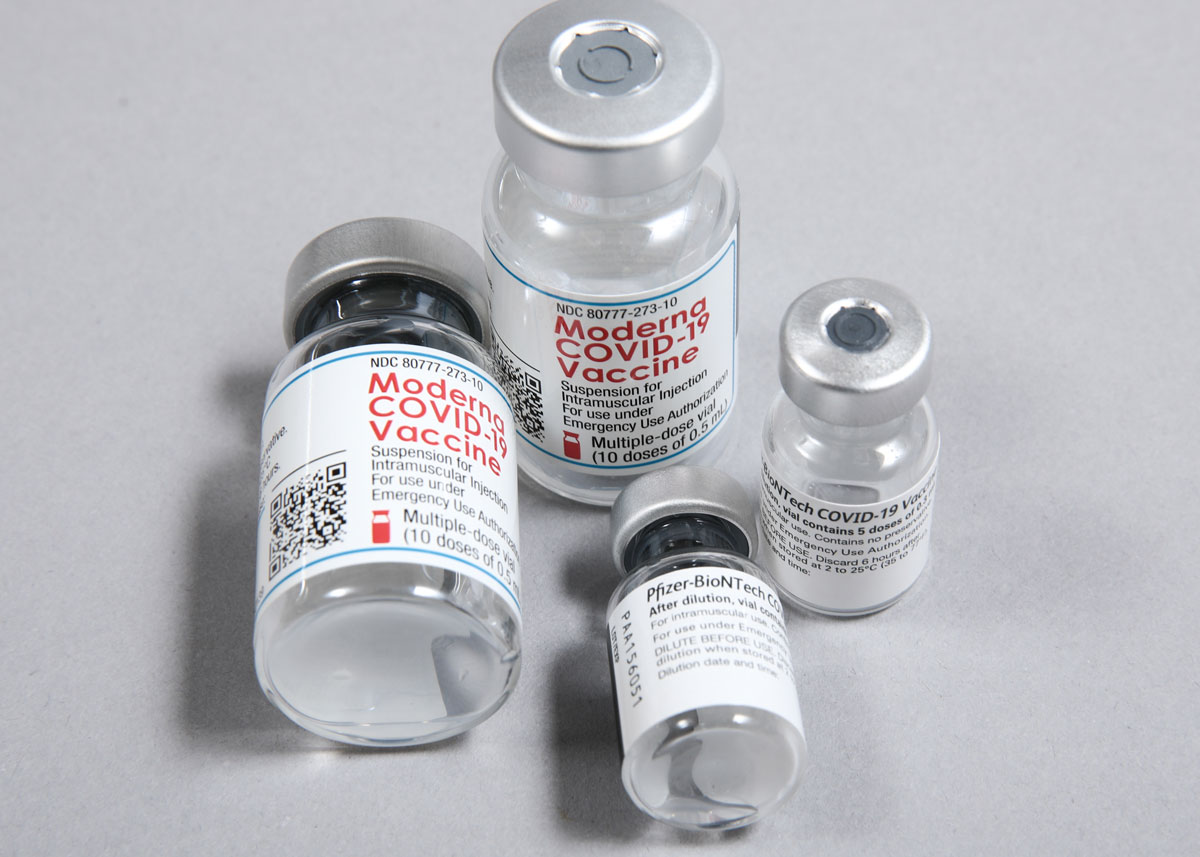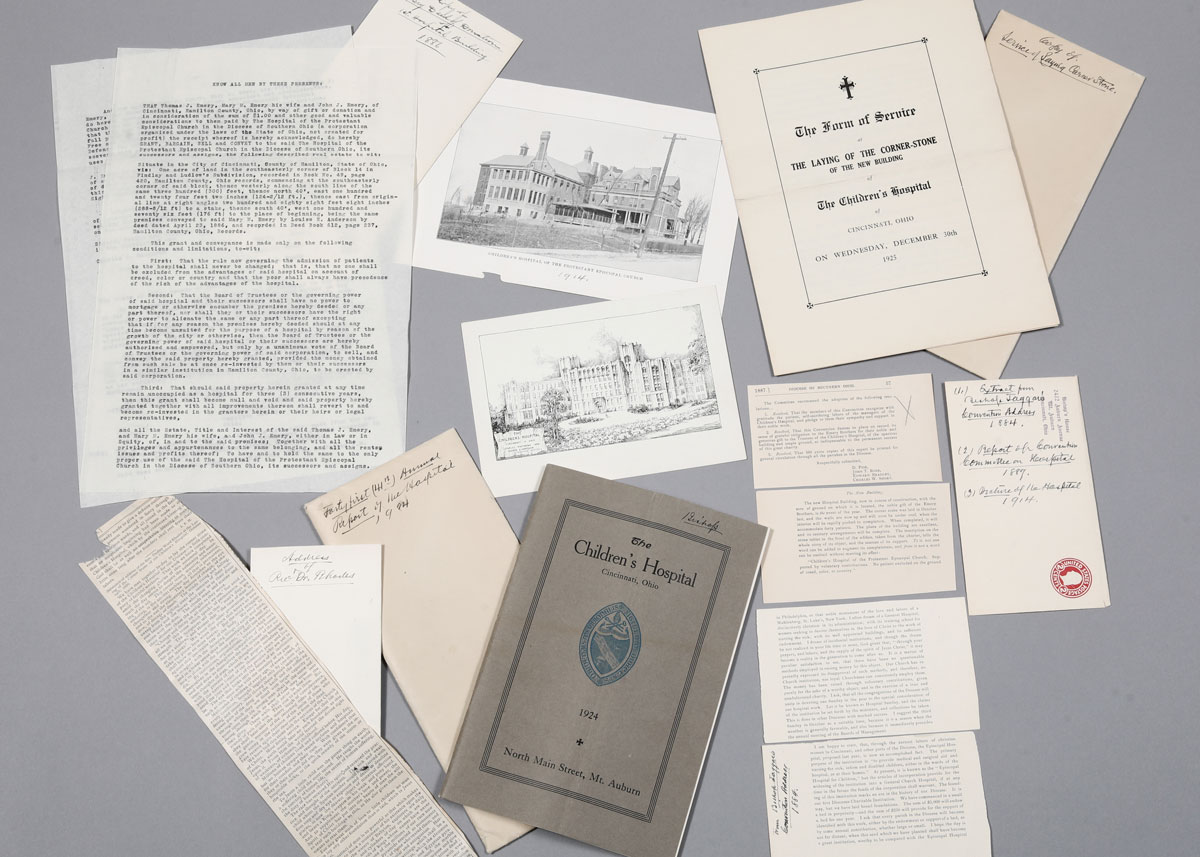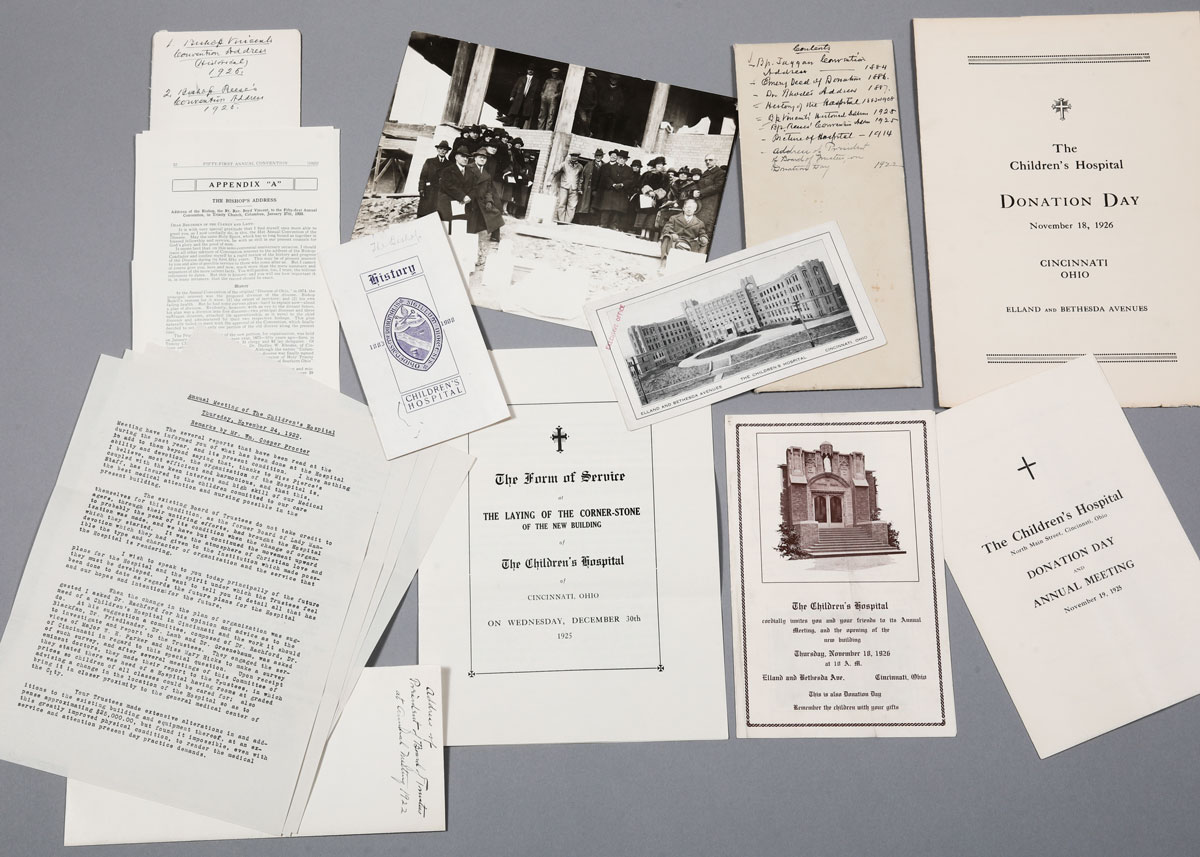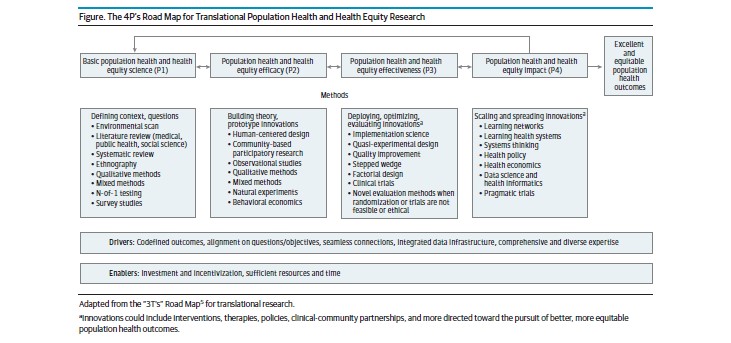In Time Capsule, Department of Pediatrics Sends Artifacts 100 Years into the Future
Post Date: October 12, 2021 | Publish Date:
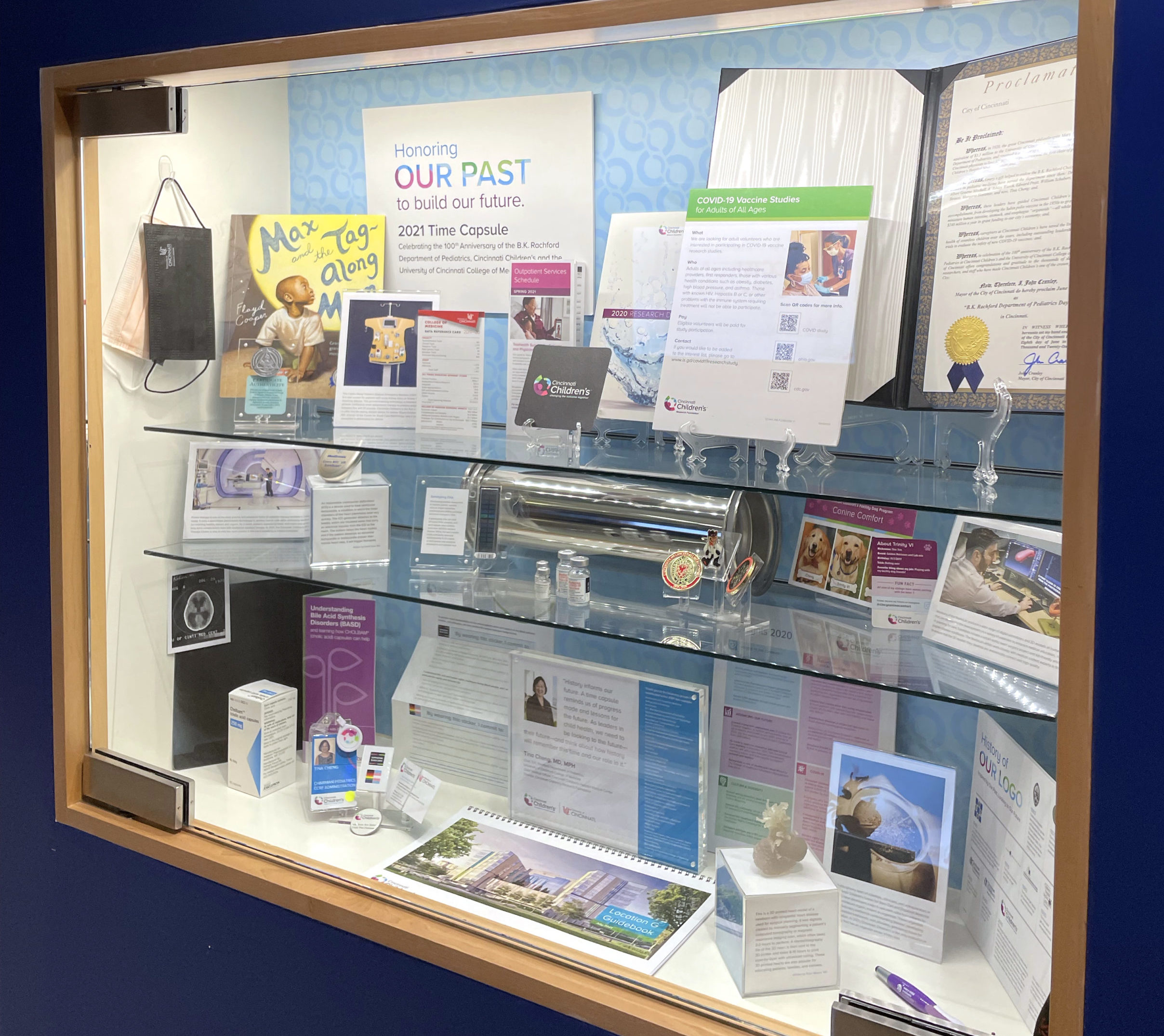
“History informs our future. A time capsule reminds us of progress made and lessons for the future. As leaders in child health, we need to be looking to the future—their future—and think about how history will remember this time and our role in it.”
–Tina Cheng, MD, MPH
A little over a century ago, Cincinnati philanthropist and hospital benefactor Mary Emery helped to support the University of Cincinnati College of Medicine’s (UCCOM) Department of Pediatrics through a gift of $250,000, which equates to more than $3.3 million in today’s dollars. At her request, the department was officially named in honor of her longtime friend and former chair of the department from 1901-1920, Benjamin Knox Rachford, MD.
By 1926, UC and Children’s Hospital, today known as Cincinnati Children’s, would affiliate. The college’s pediatrics department would be comprised of the physicians and researchers at Cincinnati Children’s, who would hold UC academic appointments.
This year, the current B.K. Rachford Chair, Tina Cheng, MD, MPH, marked this milestone with several initiatives, including a virtual speaker series entitled Envisioning Our Future for Children, a one-day virtual symposium, and, as the culmination, a commemorative time capsule.
“Collectively, we have made important contributions to child health over the past century, in our missions in clinical care, research, education, and community/advocacy work,” says Cheng, who is also director of the Cincinnati Children’s Research Foundation and chief medical officer of Cincinnati Children’s.
PRESERVING OUR PRESENT DAY
Created for the Cincinnati Children’s and UCCOM community of 2122, the time capsule memorializes the collective experience of the COVID-19 pandemic and highlights major accomplishments.
“It is also a momentous time in history as we are facing a pandemic and planning for the future amid many societal shifts,” Cheng adds. “It seemed like a good time to commemorate what we are going through now and honor our accomplishments.”
Led by Cincinnati Children’s Chief of Staff, Patty Manning, MD, nearly 40 groups from each partner institution helped select the time capsule’s contents, which include:
- COVID-19 items including Pfizer and Moderna vaccine vials, masks, clinical trial advertisements, building signage, informational videos, and more
- An official proclamation signed by Cincinnati Mayor John Cranley celebrating June 8, 2021 as “B.K. Rachford Department of Pediatrics Day”
- A 3D heart model
- An implantable cardioverter defibrillator
- A genotyping chip
- Children’s books
- The Research Foundation’s FY20 annual report and back issues of Research Horizons magazines
- A telehealth brochure, a Cincinnati Children’s fact sheet, and cards describing the center’s Child Life facility dogs
- Flash drives with photos and videos, commemorative pins, lanyards, and pens
- Copies of prominent research articles, award recognitions, organizational charts, divisional overviews, and more.
REFLECTING ON A PROUD PAST
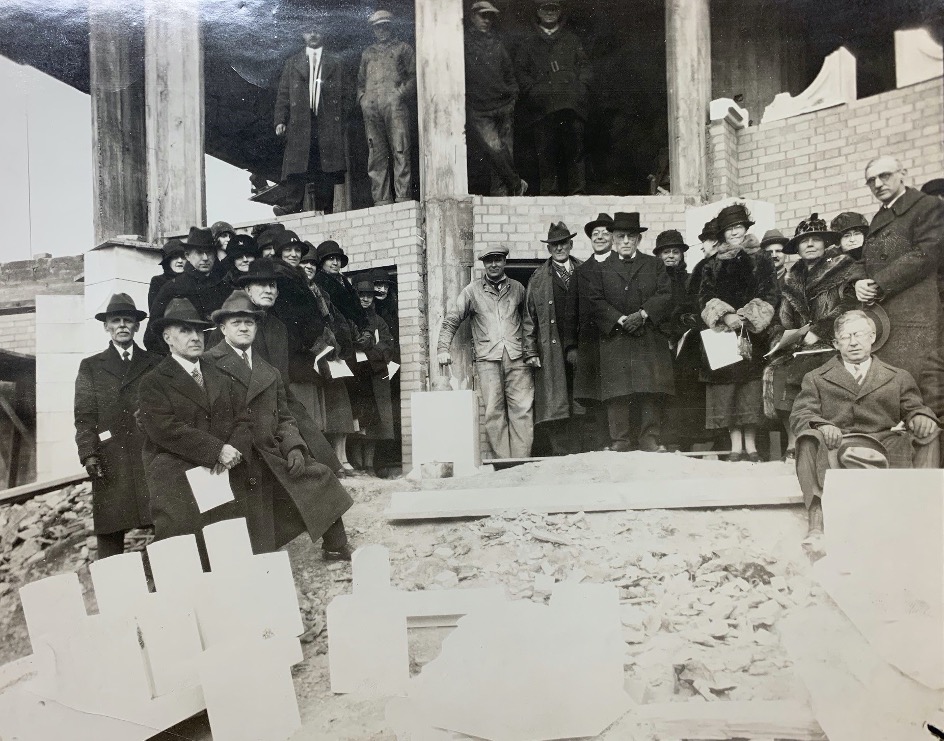
This is not the first time that Cincinnati Children’s has buried a time capsule. On Dec. 30, 1925, several hospital leaders, philanthropists, clergy, and construction workers gathered to lay the cornerstone for the new 200-bed Children’s Hospital. They enclosed a Bible, the Book of Common Prayer, photos of the previous hospital buildings, a history of the hospital, and the text of an address given at the cornerstone laying of the second hospital building in 1887.
As depicted in the photo, prominently centered amongst those in attendance was William Cooper Procter, who, at the time, was president of Procter & Gamble and chair of the hospital’s Board of Trustees. Procter firmly believed that Children’s Hospital’s ability to thrive depended on a strong academic affiliation with the UCCOM that would allow the organization to attract the best and brightest talent.
Soon after, as construction on the new Children’s Hospital was nearing completion, the relationship between Cincinnati Children’s and the UCCOM became official upon execution of an affiliation agreement. It was further strengthened by a transformational $2.5 million endowment from Procter in 1928, which helped pave the way for the organization to become a global leader in child health.
Nearly a century later and countless achievements that changed the outcome for millions of children around the world, this same time capsule was unearthed and opened at a ceremony marking the official closing of the 1926 hospital on October 24, 2003.
OUR ROLE IN ‘THEIR’ FUTURE
The contents of the 2021 time capsule are on display near the southeast entrance of Location-T, on Level 2. The exhibit will remain until May 2022, when the time capsule will be buried near the east entrance to Location-R.
“History informs our future,” Cheng says. “A time capsule reminds us of progress made and lessons for the future. As leaders in child health, we need to be looking to the future—their future—and think about how history will remember this time and our role in it.”
Read more about the B.K. Rachford Department of Pediatrics in Inspire Magazine.
Click on the arrows below to view a gallery of time capsule items
